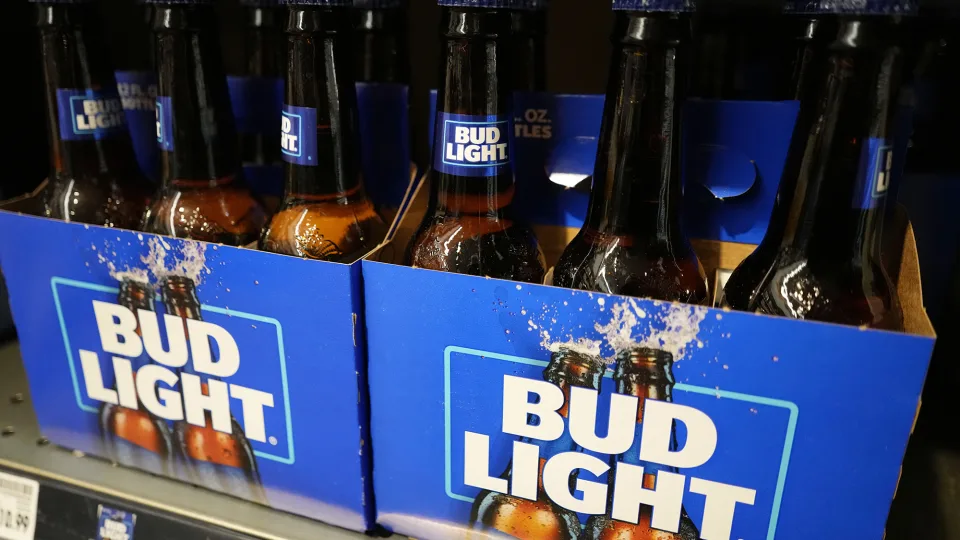In the ever-changing landscape of the brewing industry, market dynamics and consumer preferences play a pivotal role in shaping the fate of popular beer brands. Among these, Bud Light, a flagship product of Anheuser-Busch InBev, has faced significant challenges recently. This article delves into the nuances of Bud Light’s struggles, the reasons behind its decline, AB InBev’s response, and the global perspective on the company’s performance.
Bud Light’s Declining Sales
Bud Light, a once-mighty contender in the American beer market, has seen a sharp decline in its sales. The third-quarter report from AB InBev revealed a staggering 13.5% drop in revenue per 100 liters, a metric crucial for assessing beer sales. This decline was primarily attributed to the ongoing backlash Bud Light faced from its customers. The controversial partnership with a transgender influencer, Dylan Mulvaney, stirred a negative response, leading to a significant volume decline of Bud Light. Consequently, sales to US retailers plummeted by nearly 17%, severely impacting AB InBev’s bottom line.
Impact of Controversial Partnerships
The fallout from the partnership with Mulvaney led to Bud Light losing its long-standing title as the top-selling American beer. Rival Modelo, owned by Constellation, seized this opportunity, gaining ground in the US market. Data from NIQ revealed a striking 30% decrease in Bud Light’s volumes year-over-year, painting a grim picture for the brand.
AB InBev’s Response and Marketing Strategies
In response to Bud Light’s declining sales, AB InBev adopted strategic measures. Deals were struck with wholesalers, involving financial incentives to distributors and increased marketing expenditure on the brand. Despite these efforts, the company witnessed a 29% decline in adjusted US earnings, indicating the gravity of the situation.
AB InBev’s CEO, Michel Doukeris, acknowledged the challenges and emphasized the importance of customer feedback. He revealed that over 40% of lapsed Bud Light customers expressed willingness to give the brand another chance. Acknowledging consumers’ desire for “beer without a debate,” AB InBev pledged to focus on the essence of beer, acknowledging the need to align the brand with customer expectations.
To rejuvenate sales, Bud Light embarked on extensive marketing campaigns and partnerships. Advertisements featuring NFL players were rolled out, emphasizing the brand’s ease of consumption and enjoyment. Additionally, a significant boost came from the UFC’s decision to switch their beer sponsorship from Modelo to Bud Light, marking a pivotal moment in AB InBev’s efforts to revitalize the brand.
The Global Perspective: Challenges and Growth
While Bud Light faced challenges in the US market, AB InBev’s global performance exhibited a more optimistic trend. Despite the decline in volumes by 3.4%, the company’s overall revenue surged by 5% to approximately $15.6 billion. Growth was notable in regions such as the Middle East, Africa, and Asia-Pacific. However, AB InBev expressed concerns about the “soft” performance in Europe, highlighting the complexities of the global beer market.
The Future of Bud Light
In conclusion, Bud Light’s journey through challenges and strategic responses exemplifies the dynamic nature of the brewing industry. AB InBev’s proactive efforts to address customer concerns and align the brand with consumer expectations demonstrate a commitment to revitalizing Bud Light. As the brewing giant navigates the intricate landscape of the global market, adapting to changing consumer preferences will be key.
Bud Light’s story serves as a reminder that in the face of adversity, innovation, customer focus, and strategic decision-making can pave the way for resurgence. The future of Bud Light, once clouded by uncertainty, now carries a glimmer of hope as AB InBev steers the brand towards a brighter and more promising horizon.
